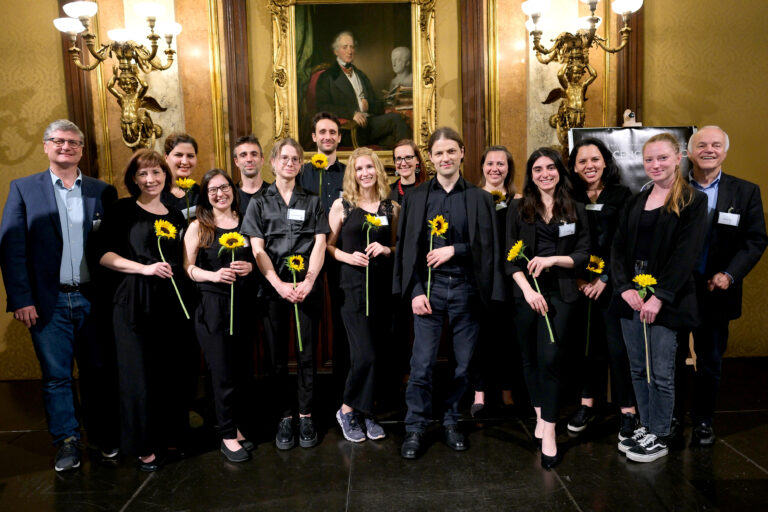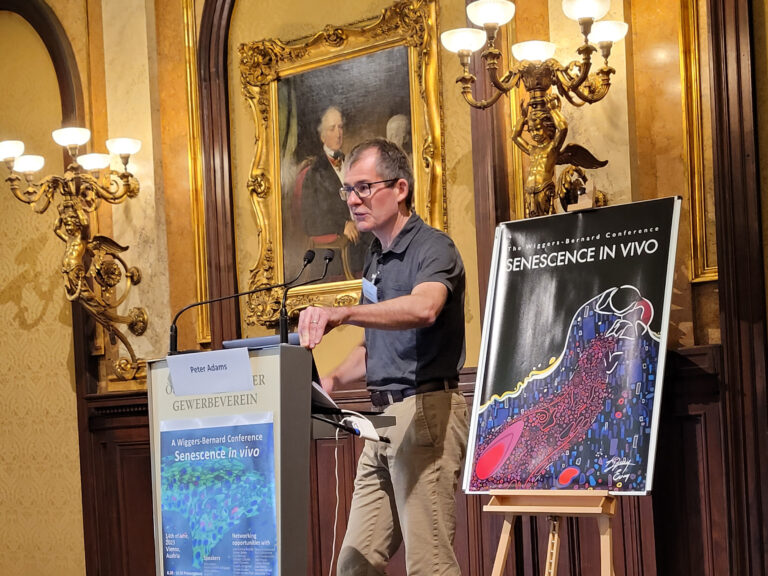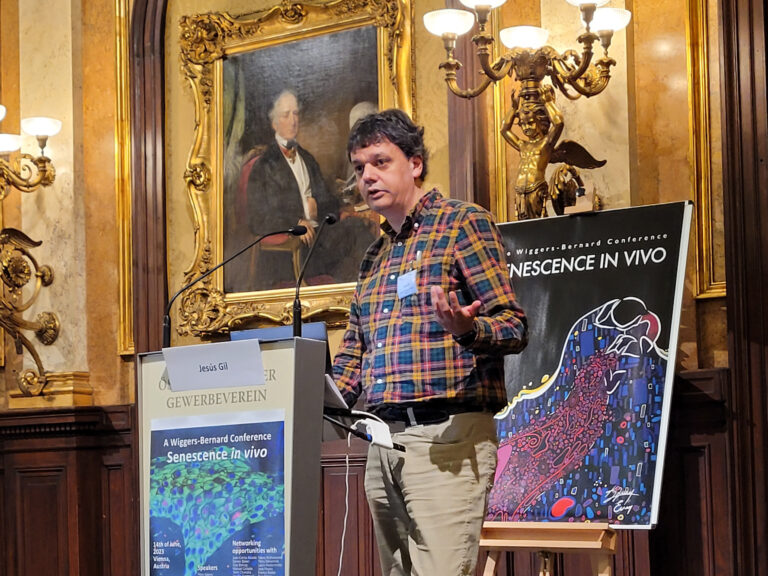The Wiggers-Bernard Conference: Senescence in vivo
While cellular senescence is well established in vitro, senescence in vivo is a recent line of research with many questions yet unanswered and a lot of potential for new therapeutic approaches. For the Wiggers-Bernard Conference: Senescence in vivo, we have invited scientists who have established their research careers with a focus on the role of senescence in vivo, offering an ideal opportunity for networking. The talks focused on the role of senescence in physiology and pathology, and how to modulate senescence in vivo.
Our director Johannes Grillari, opened the conference with a culinary lesson: “If life gives you lemons, Vienna makes Schnitzel. And today, Vienna is the capital of senescence research.”
Session 1 at Wiggers-Bernard: Senescence in vivo focused on general concepts, mechanisms and markers of senescence. Our first speaker Peter Adams explained the cellular mechanisms of aging and how aged or stressed cells sound the alarm. He was followed by John Sedivy, whose talk on repeatome activation in cellular senescence was equally informative and entertaining. “Anybody working with primary cells knows the Hayflick’s phenomenon to be one of the most reproducible phenomena of cell culture.” Judging by the audience’s reaction, we all got to know the Hayflick limit (whether we wanted to or not). Fabrizio d’Adda di Fagagna gave a strong talk on “Persistent DNA damage as the ultimate cause of cell aging”.
Senescence in Physiology was the motto of Session 2. What happens to fracture healing if we clear p16+ or p21+ cells? Sundeep Khosla gave insights into the role of cellular senescence in skeletal aging and bone healing. Marco Demaria explained how necrosis can be replaced by senescence via PARP-I inhibition – and he introduced us to ICSA, the International Cell Senescence Association.
“Senescence mediates a rapid response to skin injury in a transcription-independent manner” was presented by SHoW PI Mikolaj Ogrodnik, with contributions from our Karla Valdivieso & Tomaž Rozmarič and collaboration with Diana Jurk.
In Session 3, “Senescence in Pathology/Cancer”, we learned a lot about strategies to detect and target cellular senescence from Jesus Gil. Karin Scharffetter-Kochanek introduced us not only to the regulation of p16 in aging and age-related pathologies, but also to the “power of walking”, chronic wounds and how to assist their healing on a cellular level (while not forgetting about causal therapy).
Thomas von Zglinicki spoke about therapy-induced senescence as a cause for tumor recurrence and accelerated aging of cancer survivors – definitely an aspect of senescence that doesn’t get talked about enough. We stayed within the cancer field with Eiji Hara’s talk on what role microorganisms play when it comes to senescence and cancer. We love how Wiggers-Bernard: Senescence in vivo assembled so much out-of-the-box thinking, every perspective so very important to define the character of cellular senescence.
Last but not least, we couldn’t call Vienna the “Capital of Senescence” without him: Jim Kirkland from MayoClinic shed light on the hot topic of senolytics and their path to translation. With his talk he opened the last session at Wiggers-Bernard: Senescence in vivo: “Interventions on Senescence”. Afterwards, Juan-Carlos Acosta talked about innate immune signaling in cellular senescence in his talk “Oncogene-induced senescence is a barrier to cancer progression”. The Alpha and Omega of the event was our Johannes Grillari, who not only held the first but also the last talk, closing with “Identification of senescence-specific molecules, companion diagnostics and senolytic strategies” – featuring our beloved extracellular vesicles!
The conference was a great success! Thank you everyone who helped make this happen: directors Heinz Redl and Johannes Grillari, PI Mikolaj Ogrodnik, and our dedicated postdocs and students!



















